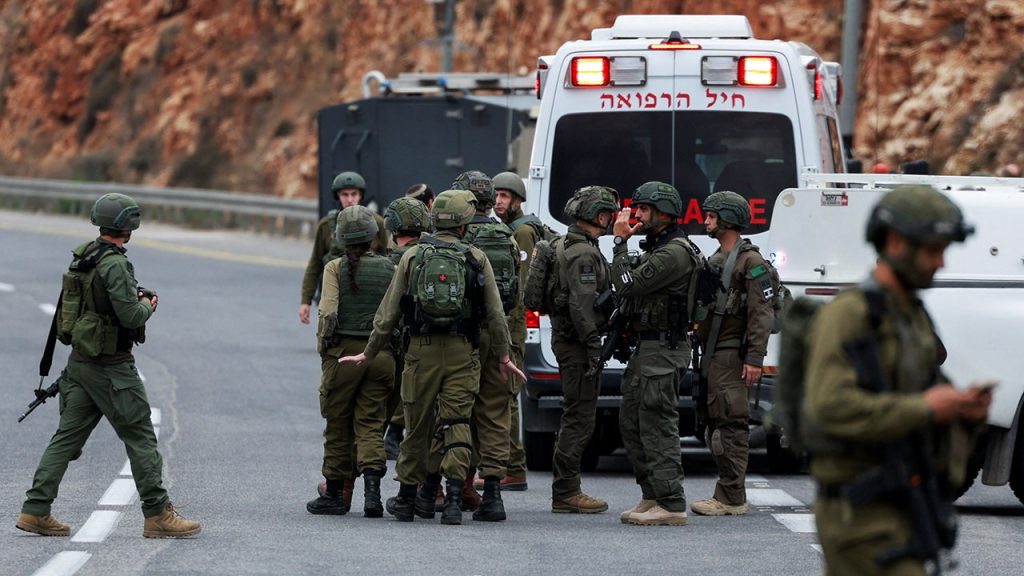On a tense Friday in the West Bank near the settlement of Ariel, a gunman from Hamas initiated a shooting attack on an Israeli bus, resulting in injuries to eight individuals, including four soldiers. The assailant, identified as 46-year-old Samer Hussein, was ultimately killed by Israeli forces during the incident. The Israel Defense Forces (IDF) released a statement indicating that a significant shooting occurred at Gitti Avisar Junction, leaving several injured and causing damage to the bus. Visual evidence from the scene, including videos and photographs, depicted the aftermath, highlighting numerous bullet holes in the bus’s front windshield alongside a damaged vehicle nearby.
Following the attack, the IDF confirmed the elimination of the perpetrator on-site, emphasizing the urgency and severity of the situation. Hamas’s military wing, the al-Qassam Brigades, later claimed affiliation with Hussein, reaffirming the ongoing state of conflict and associated violence in the region. This incident is reflective of the broader and persistent cycle of violence that characterizes the Israeli-Palestinian conflict, with retaliatory actions and armed confrontations being a tragic norm that ebbs and flows based on political tensions and military engagements.
In another tragic event occurring on the same day, a crowd surge at a bakery in the Gaza Strip resulted in the deaths of two young girls and a woman. The chaos ensued as Palestinian families scrambled to obtain bread amid rising food prices and resource shortages. The victims, aged 13, 17, and 50, were reported to have suffocated due to the crush of bodies in the confined space at the al-Banna bakery, underscoring the dire humanitarian situation in Gaza exacerbated by the ongoing conflict and economic instability. Medical personnel confirmed their deaths upon arrival at the Al-Aqsa Martyrs Hospital in Deir al-Balah, highlighting the tragic outcome of desperate circumstances faced by many families in the region.
The crisis in the Gaza Strip is further intensified by soaring food prices. Reports indicate that the cost of essential items, particularly flour, has soared dramatically, with prices exceeding $100 per bag. This increase in food scarcity and affordability directly correlates with the aftermath of a recent attack on a convoy of nearly 100 U.N. aid trucks, which has severely hindered the supply and distribution of vital resources in the area. Residents of Gaza are increasingly facing challenges in meeting basic needs, resulting in heightened tensions and vulnerable living conditions amid the overarching political strife.
The situation paints a bleak picture of life in Gaza, where the combination of economic hardship and sporadic violence creates an unpredictable and hazardous environment. Residents like a woman from Deir al-Balah have expressed their despair regarding the escalating prices for basic staples, indicating that the local population is bearing the brunt of both the economic blockade’s impact and the effects of military engagements. Such sentiments lay the groundwork for broader implications about stability in the region, particularly as the humanitarian crisis deepens while political solutions remain elusive.
In conclusion, the recent incidents in both the West Bank and Gaza illustrate a grim reality for Palestinians and Israelis alike, marked by violence, loss, and the struggle for access to basic necessities. The shooting attack by a Hamas gunman and the lethal crowd surge for bread represent the multifaceted issues stemming from a prolonged conflict, where despair often leads to tragedy. As the situation continues to evolve, the need for comprehensive dialogue and intervention to address both humanitarian needs and long-term conflict resolution remains pressing, with international observers monitoring the developments closely amidst a backdrop of deep-seated grievances on both sides.

